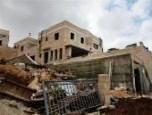 The sleepy Ramat Shlomo neighborhood at the center of the debate over Israeli construction in east Jerusalem shows no signs of the political furor. On a recent morning, a bearded father carried his son from a car seat to a kindergarten. Teenage girls waited in a supermarket checkout line. The monotony of low buildings with light stone facades was broken only by an occasional grocery store or pizzeria.
The sleepy Ramat Shlomo neighborhood at the center of the debate over Israeli construction in east Jerusalem shows no signs of the political furor. On a recent morning, a bearded father carried his son from a car seat to a kindergarten. Teenage girls waited in a supermarket checkout line. The monotony of low buildings with light stone facades was broken only by an occasional grocery store or pizzeria.
The gulf between the way Yerushalayim is seen by Israelis and by many in the world is nowhere more apparent than it is here.
For Ramat Shlomo’s chareidi families – and for most Israelis – building Jewish homes in any part of Yerushalayim is a natural right. Palestinians, who have spent four decades watching Israeli construction permanently change the face of the city, see every new housing project in east Jerusalem as a blow to their desire for a capital here.
Ramat Shlomo is in northeast Yerushalayim , just outside the invisible line that delineates the part of the city Israel controlled before 1967. On one side lies Ramot, a larger Jewish neighborhood also built on land Israel conquered in that year’s Mideast war, and on the other, less than a mile away, is the Arab neighborhood of Shoafat.
Today, there are over 2,300 housing units in Ramat Shlomo. Israel’s approval of 1,600 more has triggered the worst feud in decades between Israel and the U.S.
Washington condemned the move, which was announced during a high-profile visit to the country by Vice President Joe Biden.
The plans have shaken the Obama administration’s delicate efforts to restart peace talks just as they were showing success. And the new spotlight they have brought to east Jerusalem settlements like this one could also tie Israel’s hands after years of unrestricted development.
The neighborhood was built in 1996 specifically for frum Jews. Today it has 40,000 residents, drawn largely by low housing prices rather than ideology. It was not located in the midst of a Palestinian population, and its construction did not draw a high level of controversy at the time.
The residents appear bewildered by the political uproar.
“We have no idea how all of this landed on us,” said Ezra Berger, director of the neighborhood’s community center. “We’re just normal people living here in a normal neighborhood in Yerushalayim.”
The reasoning for the new building project is simple, Berger said: Residents have big families and have run out of room. After environmentalists defeated a major development plan on the western outskirts of Yerushalayim a few years back, Israeli officials say they have been forced to look eastward, in the disputed sector, to ease a housing crunch.
The Arab population is growing too, but what would be normal city planning anywhere else in the world is politically explosive here.
{Google Hosted/Yaiur Alpert-Matzav.com Israel}












We live in a sick world and yes OBAMA IS AN ANTI SEMITE lets stop denying it